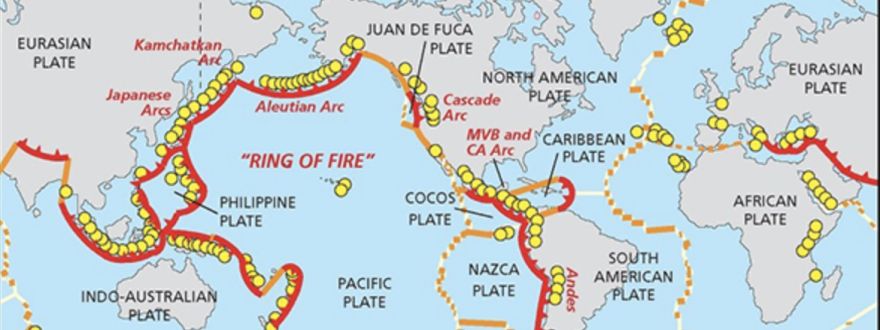
HOW DO TECTONIC PLATES CREATE EARTHQUAKES, VOLCANOES & MOUNTAINS?
The Earth’s surface is active according to tectonic theory, moving as much as 1-2 inches a year. The many tectonic plates shift and interact all the time. This motion reshapes the Earth’s outer layer. Earthquakes, volcanoes and mountains are the result of this process.
Also at work are the roles of convection and gravity:
- Scientists have discovered that the continents have come together and spread apart at least three times in the Earth’s history. Geologists believe this motion is driven by convection in Earth’s mantle which causes hot rock to rise and cooler rock to sink.
- When the denser tectonic plate dives beneath another plate it is due to the high energy by the Earth’s gravity that pushes into the mantle. Earth’s tides, which are caused by a gravitational tug of the Moon and the Sun, also put extra strain on geological faults.

HOW TO PREPARE FOR AN EARTHQUAKE
Nothing can prevent the next major California earthquake from happening. The key to being safe during an earthquake is preparation. While an earthquake safety kit will be of help after an earthquake, the planning conversations you have with your family members before an earthquake are most important.
Create an earthquake safety plan for you and your loved ones.
- Identify safe places in each room of your home.
- Practice Drop, Cover and Hold On with each member of your household.
- Make or purchase an earthquake safety kit.
Consider a seismic retrofit which involves strengthening your home’s foundation to make it more resistant to shaking. CEA offers premium discounts for houses and mobilehomes that have been retrofitted. Find out about grants to help for retrofits under the Earthquake Brace + Bolt program, and the CEA Brace + Bolt program.
Understanding Geologic & Structural Risks
Find about the potential geologic threats to your home in case of a major earthquake. The violent shaking from earthquakes can:
- Rupture the earth.
- Trigger landslides.
- Turn the surface of the earth into liquid.
If your home was built before 1980, you may have structural risks that could affect your safety.
Personal Preparedness Guidelines
Follow the Seven Steps to Earthquake Safety. Decrease your risk of damage and injury from a major earthquake by identifying possible home hazards:
- Tall, heavy furniture that could topple, such as bookcases, china cabinets, or modular wall units.
- Water heaters that are not up to code by being strapped could rupture.
- Stoves and appliances that could move enough to rupture gas or electrical lines.
- Hanging plants in heavy pots that could swing free of hooks.
- Heavy picture frames or mirrors over a bed that could fall while you are sleeping.
- Latches on kitchen cabinets or other cabinets that will not hold the door closed during shaking.
- Breakables or heavy objects that are kept on high or open shelves could fall and break causing additional damage and safety hazards.
- A masonry chimney could crumble and fall through an unsupported roof.
- Flammable liquids, such as painting or cleaning products, would be safer in a garage or an outside shed.
IS YOUR HOUSE AT RISK FOR EARTHQUAKE DAMAGE?
Do you know about the primary geologic hazards where you live? This information could affect your family’s and home’s safety during an earthquake. Visit CEA’s county risk map to find out if you live near an active fault.
Your earthquake hazard and risk depends on the location of your home, your home’s construction, and your home’s location near an active fault zone. Other factors include:
- The population density in your community.
- Building codes.
- Your family’s emergency preparedness.
If your home was built before 1980, it may also be vulnerable to serious structural damage. With safety planning, reinforcing the structure of your home, securing your personal property, and buying earthquake insurance, you stand a better chance of riding out the next California earthquake.
Interested in insuring your home against Earthquakes? Reach out to us to add earthquake coverage to your home's policy through our provider (and source for this article!), California Earthquake Authority.





